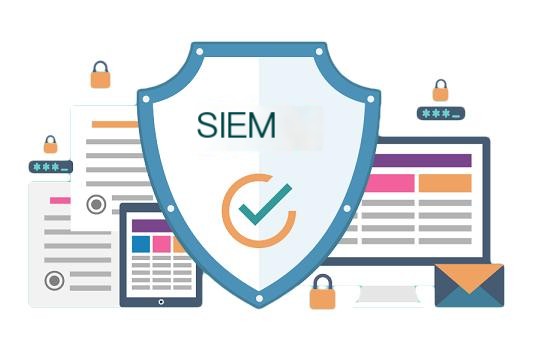Should businesses invest in and deploy open-source SIEM (Security Information and Event Management) tools? SIEM is an essential component of modern enterprise network security. In fact, SIEM solutions provide critical IT environment protection and compliance standard implementation. Only through log management, security analysis and correlation, and report templates can businesses withstand modern cyber attacks.
 >
>
However, SIEM can also pose significant challenges for your business’s IT department. Typically, the deployment and maintenance of SIEM can be costly; its solutions require operational costs in terms of both resources and time. Additionally, SIEM requires constant tuning and evaluation upon deployment to ensure optimal performance. All of this can make businesses hesitant to deploy SIEM solutions.
Nevertheless, your business may have access to the crucial security analytics it needs: open-source SIEM.
What is open-source SIEM?
Open-source SIEM tools literally open their cybersecurity designs to the public. This allows IT professionals more freedom to modify and share tool code, providing important customizability and adaptability.
In many cases, businesses can access these open-source InfoSec tools for free; therefore, the cost burden faced by businesses in deployment and maintenance is significantly reduced compared to full enterprise-level solutions. While free SIEM tools may not offer the comprehensiveness of enterprise-level solutions, open-source SIEM does provide reliable functionality at a reasonable cost. Notably, some free SIEM tools do not impose any restrictions on their usage or data retention, attracting many small to medium-sized businesses (SMBs).
To help your business find the ideal free security analytics tool, here is a list of the 10 best open-source SIEM tools for your reference and selection!
SIEMonster
SIEMonster bridges the gap between free SIEM and paid solutions by offering options for both. Like many of the listed solutions, SIEMonster offers a platform that combines multiple open-source tools. Thus, it provides a centralized interface for controlling these tools, data visualization, and threat intelligence. Unlike some other open-source SIEM solutions, businesses can deploy it in the cloud.
Apache Metron
As one of the latest open-source SIEM tools, Apache Metron evolved from Cisco’s Open SOC platform. Very similar to SIEMonster, it also consolidates multiple open-source solutions into a centralized platform. Apache Metron can parse and standardize security events into standard JSON language for easy analysis. Additionally, it can provide security alerts, enrich data, and tag information. Moreover, Apache Metron can index and store security events, which is a great boon for businesses of all sizes.
AlienVault OSSIM
Offered by AT&T Cybersecurity, AlienVault OSSIM is an open-source SIEM tool based on the AlienVault USM solution. Similar to the tools mentioned above, AlienVault OSSIM combines multiple open-source projects into a package. Furthermore, AlienVault OSSIM allows device monitoring and log collection. It also offers normalization and event correlation.
MozDef
Created by Mozilla, MozDef automates security incident handling, offering scalability and resilience; scalability is especially appealing to SMBs. This open-source SIEM solution uses a microservices-based architecture; MozDef can provide event correlation and security alerts. Moreover, it can integrate with multiple third parties.
OSSEC
Technically, OSSEC is an open-source intrusion detection system, rather than a SIEM solution. However, it still provides a host agent for log collection and a central application for processing these logs. Overall, this tool can monitor log files and file integrity to prevent potential cyberattacks, perform log analysis from multiple network services, and offer numerous alert options for IT teams.
Wazuh
Wazuh has actually evolved from a different open-source SIEM solution, OSSEC. However, Wazuh is now its own unique solution. Indeed, it supports agent-based data collection and syslog aggregation. As such, Wazuh can easily monitor local devices. It features a unique web UI and a comprehensive rule set for easy IT management.
Prelude OSS
Prelude OSS offers an open-source version of the Prelude SIEM solution. It supports multiple log formats and can integrate with other security toolsets. It also normalizes event data into a standard language, which can aid in supporting other cybersecurity tools and solutions. Prelude OSS also benefits from continuous development, ensuring it stays in sync with the latest threat intelligence.
Snort
Another open-source intrusion detection system, Snort is committed to providing log analysis; it also conducts real-time analysis of network traffic to eliminate potential threats. Snort can also display real-time traffic or dump packet streams into log files. Moreover, it can determine how and where data is stored in the network using output plugins.
Sagan
As a platform, Sagan works nearly exclusively alongside another open-source SIEM tool, Snort; Sagan supports Snort’s rules. Sagan is designed to be lightweight and can write to the Snort database. This may be another essential tool for those interested in using Snort.
ELK Stack
This solution is also known as ELK or Elastic Stack. The ELK Stack solution also encompasses multiple free SIEM products. For example, using the embedded Logstash component, ELK can aggregate logs from almost any data source. Additionally, it can correlate that log data through various plugins, although it requires manual security rules. The ELK Stack can also visualize data using other components.
Drawbacks of open-source SIEM tools and solutions
There are several drawbacks and advantages to deploying free SIEM tools. Most open-source SIEM solutions do not offer basic functionalities such as comprehensive log management, visualization, automation, or third-party integration. Moreover, many free SIEMs cannot handle cloud environments; this can present significant obstacles to businesses’ digital transformation efforts.
Regardless of your business’s size, you should prioritize utilizing enterprise-level SIEM solutions where technological capabilities allow, and only consider free SIEM tools when costs are genuinely limited. Enterprise-level SIEMs possess more features that can enhance enterprise cybersecurity efforts.


